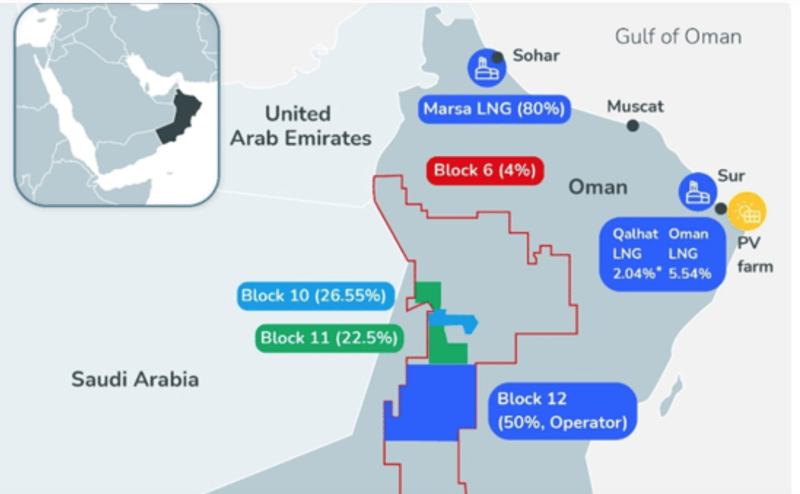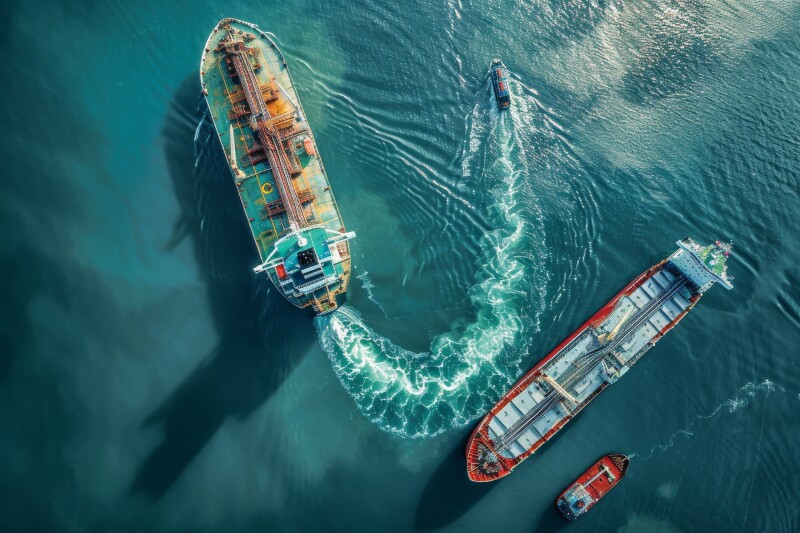TotalEnergies and OQ (Oman National Oil Company) have taken a final investment decision (FID) on the Marsa LNG project which, given its total reliance on solar power, promises to have one of the lowest greenhouse gas (GHG)-emissions-intensity profiles of any LNG plant ever built.
TotalEnergies' Chairman and CEO Patrick Pouyanné and Mulham Basheer Al Jarf, chairman of OQ, took the decision on 21 April during Pouyanné’s visit to Muscat to meet with Sultan Haitham bin Tariq and Salim bin Nasser Al Aufi, Minister of Energy and Minerals.
The 1-mtpa-capacity Marsa facility expects to drop its first LNG in 2028. Situated at the port of Sohar, the plant will serve the marine fuel market (LNG bunkering) in the Gulf with TotalEnergies and OQ having rights to offtake production not sold as bunker fuel (at an 80/20 split, respectively).
Main engineering, procurement, and construction contracts have been awarded to Technip Energies for the LNG plant and to CB&I for the 165,000-m3 LNG tank.
Earlier, TotalEnergies had signed a sale and purchase agreement with Oman LNG to offtake 0.8 mtpa of LNG for 10 years starting from 2025.
Compared to conventional marine fuel, LNG bunkering can cut emissions from GHG by 23%, nitrogen oxide by 85%, sulfur by 99% and fine particle emissions by 99%, according to TotalEnergies.
Solar Power Promises To Cut Marsa’s GHG Footprint by 90%
As for the solar component, TotalEnergies and OQ Alternative Energy, Oman’s national renewable energy champion, said that discussions are at an advance stage to develop a portfolio of up to 800 MW, including the 300-MWp solar project to power Marsa.
With solar generating its electricity, Marsa’s GHG-intensity level is predicted to fall below 3 kg CO2e/BOE, according to TotalEnergies which points out that conventional LNG plants exhibit an average emission intensity of around 35 kg CO2e/BOE—a more than 90% drop in emissions.
The French major launched its first renewables initiative in Oman in November 2023, a solar farm to power a desalination plant (a 17-MWp solar plant to produce more than 30,000 MWh per year) in a joint venture with the French firm Veolia.
With FID now declared, Marsa LNG can extend its rights until 2050 to Oman’s offshore Block 10 which will deliver 150 Mcf/D of natural gas as feedstock to the LNG plant. Marsa holds a 33.19% interest in the Mabrouk North-East field on Block 10 which came onstream in January 2023 and reached plateau in April 2024.

In Q1 2024, TotalEnergies reported its production in Oman at 61,000 BOED which encompasses oil in Block 6 (4%), natural gas in Block 10 (26.55% via Marsa LNG LLC), and LNG through its participation in the 11.4-mtpa-capacity Oman LNG (5.54%)/Qalhat LNG (2.04% via the Oman LNG facility).
TotalEnergies is also currently exploring Block 12 (50% operator interest) and is appraising Block 11 (22.5% interest).
TotalEnergies Agrees To Acquire Remaining Stake in SapuraOMV
TotalEnergies also announced this week an agreement to acquire the remaining 50% stake in Malaysian independent gas producer and operator SapuraOMV Upstream Sdn. from Sapura Upstream Assets Sdn. Bhd. (SUA) for $530 million.
In January, the French major had agreed to acquire OMV AG’s 50% interest in SapuraOMV for $903 million, setting the stage for its eventual taking full ownership and advancing its interests in Asian gas and LNG markets.
Both transactions are expected to close in 2H 2024.
SapuraOMV’s main assets are its 40% operated interest in block SK408 and 30% operated interest in block SK310, both located offshore Sarawak in Malaysia.
In 2023, SapuraOMV’s operated production was about 500 Mcf/D of natural gas, which feeds the Bintulu LNG plant operated by Petronas, as well as 7,000 B/D of condensates. On block SK408, the development of the Jerun gas field is on track to start up in 2H 2024, TotalEnergies said.
SapuraOMV also holds interests in exploration licenses in Malaysia, Australia, New Zealand, and Mexico.
TotalEnergies Malaysia owns interests in two production-sharing contracts in the exploration phase, and in June 2023 signed an agreement with Petronas and Mitsui to develop a carbon storage project in Southeast Asia and evaluate several CO2 storage sites in the Malay Basin.


